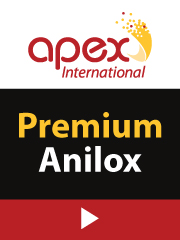Label PRomotion | Brand Design Shifts from Good Looks to Good Feelings
- Published: October 08, 2014, By Mark Lusky
Package and label design appeal appears to be shifting from “how you look” to “how you make people feel,” at least among some segments of the population. While distinctive, splashy, even controversial designs remain commonplace, there is movement toward “humanizing design.”
A recent Packaging World article by Marianne R. Klimchuk entitled, “Humanize package design” addressed the issue of going beyond good looks as it relates to millennials: “CPG [Consumer Packaged Goods] companies are by and large adept enough when it comes to engaging millennials on social media. But few have examined how their packaging design speaks to this demographic.”
Klimchuk points out, “It’s not enough to simply have a brand presence. Brands must be humanized by their packaging design…The humanization of packaging design can manifest itself on any level. Typography, imagery, shape, scale, structure—all play a role in this regard. Handcrafted elements such as cut paper, typography that is balanced in scale with the layout, illustration styles that have a hand-rendered style, line-art, or woodcut style are among the ways in which packaging design can feel genuine and relevant.”
Humanized design seems to fit right in with the core principles of social media, namely honesty, authenticity, and transparency that are, in turn, driving marketing in general. Marketing that reflects a company’s real values, visions (and even shortcomings) is becoming more important at some levels at least than “spinning” the sauciest story or presenting one’s image in the most grandiose way possible.
Klimchuk points out, “By bringing a humanized approach to package design that interacts and engages consumers, you bring a trust factor into the picture that consumers respond to…It must also have an authentic story to tell and a visually compelling way to tell it.”
This, in turn, drives positive PR. Any legitimate reporter will exclaim their preference for an honest, compelling story over a puff piece any day. It’s a logical extension of marketing authenticity to the world versus trying to impress with flashy good looks and a bunch of hype.
Companies rethinking branding in light of the move toward humanized design can do the following to get started:
- Identify core messaging that truly represents what the company is and does. Armed with this information, explore some design and messaging options for everything from labels to packaging and beyond. One obvious example is a company dedicated to being green. Deploying a look and feel that’s earthy and environmentally friendly will reinforce this commitment.
- Study what’s out there for inspiration and direction. Klimchuk cites Beech-Nut’s 100% natural baby food featuring a simple label that highlights the product inside the jar; and Vlasic Farmer’s Garden brand pickles where down-to-earth labeling and a container looking like a mason jar help the consumer focus on the contents.
- Factor in audience perceptions. “Simple,” “earthy,” and “real” may have different connotations for baby boomers and millennials. Know your audience and how it perceives these concepts. If you’re appealing across many age groups, find the common denominators and go from there.
 Mark Lusky is president of Lusky Enterprises Inc., a marketing communications and content development company. Since 2008, he has worked with Lightning Labels, a Denver-based all-digital custom label printing company, as a content developer specializing in expert advice articles. Lusky presents common-sense ideas grounded in doing what’s real and right for managing and enhancing public image.
Mark Lusky is president of Lusky Enterprises Inc., a marketing communications and content development company. Since 2008, he has worked with Lightning Labels, a Denver-based all-digital custom label printing company, as a content developer specializing in expert advice articles. Lusky presents common-sense ideas grounded in doing what’s real and right for managing and enhancing public image.










